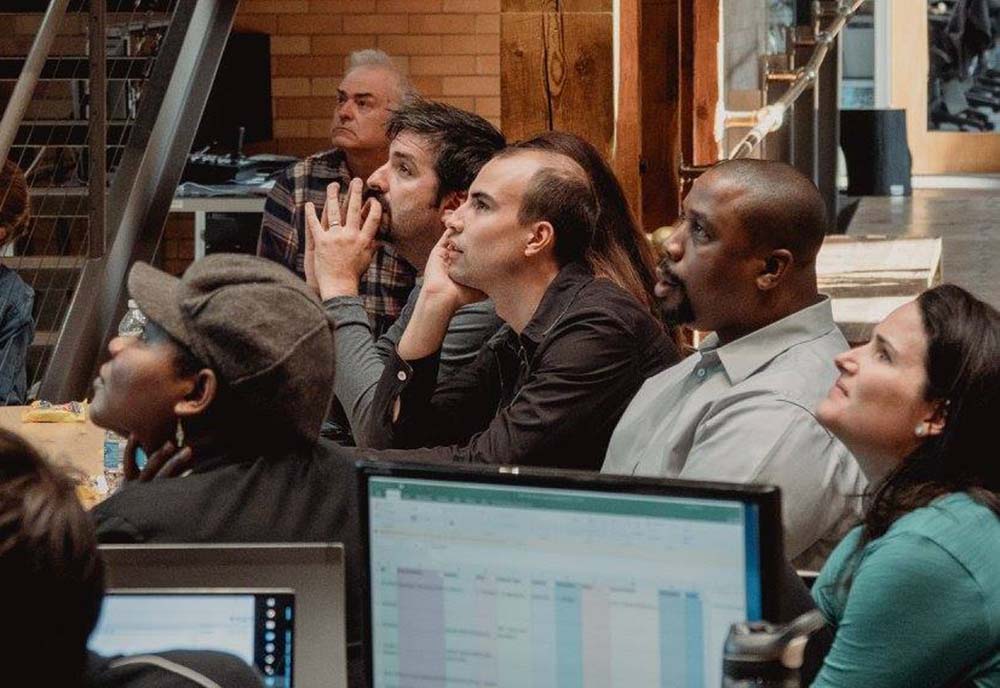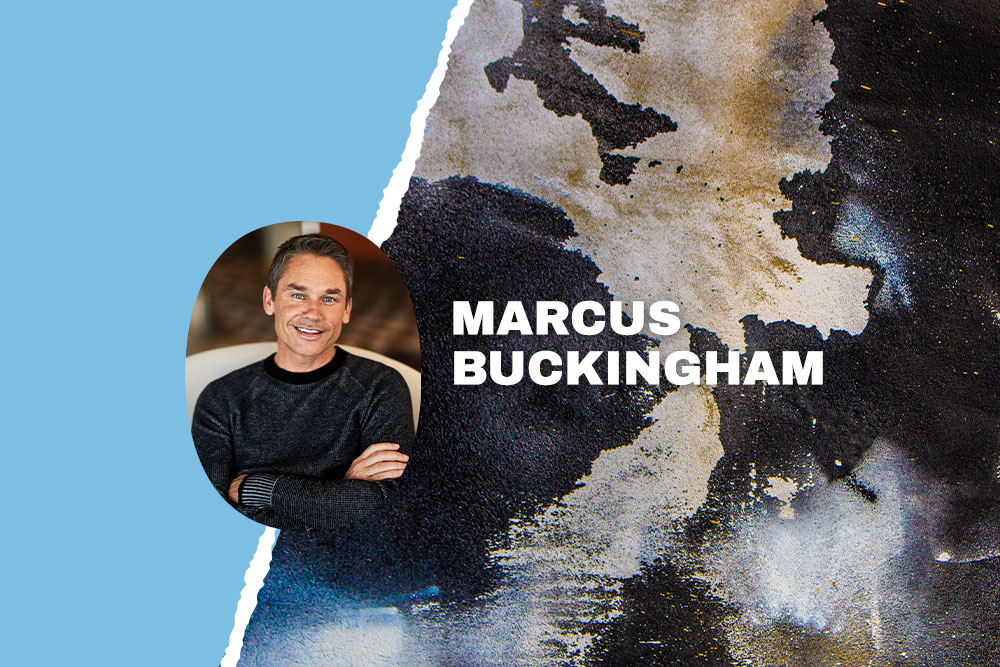
The Global Leadership Network’s premier two-day leadership event of the year has been held annually in August for the last 25+ years. Recognized as one of the largest leadership events of its kind, The Global Leadership Summit (GLS) brings leaders and aspiring leaders together from around the world. One of the things that makes this event so unique are the leaders from around the world who are part of a diverse audience of curious, growth-minded, change-driven people with a vision for positive transformation in their communities.
At the GLS, I found a new perspective.
Through the GLS, many of these leaders gain something far more than leadership insights—they have an experience with others that ignites a spark of an idea that ultimately helps them see a grander vision. This was exactly the case for Founder and CEO of FaithTech, James Kelly, who attended the GLS with fellow leaders for the first time in the live studio audience in Chicago in 2016, right about the same time he started his new company, which was on the brink of major breakthroughs in addressing suicide prevention, among other big issues.
Watch James’ powerful 13-minute story video below, then read on to discover how his experience at the GLS helped him realize an opportunity to connect believers from tech, ministry, and business around a global movement spurred on by the idea that tech solutions can not only solve big problems, but also be redemptive—a global technology movement all about Jesus, for Jesus, by Jesus, and because of Jesus.
ARVE Error: Mode: lazyload not available (ARVE Pro not active?), switching to normal mode
“I remember the talks far less than I remember the experience,” said James. “The GLS came at such a unique time at beginning of FaithTech five years ago. At the time, I remember having a more localized mindset. But at the GLS, I found a new perspective—I thought, how beautiful would this be if all over the world, in all these major cities, you had thriving community of believers in tech and ministry collaborating with each other and building solutions together? It could be a global movement!”
Today, FaithTech is located in 15 cities, with more than 100 cities on a waiting list, which only highlights the desire these leaders have to connect and truly provide solutions for those around them. “There are believers all over the world that might feel isolated, alone, or underutilized,” said James. “They want to build, create, and work with other like-minded people to serve their city, church, and charities. God is doing something bold! In a couple years, I think FaithTech will be on every continent.”
It starts with solving a problem.
What started out as a way to bring believers together to solve problems has grown into a launching pad that is literally changing and saving lives. Before FaithTech got started, James, his wife, and others moved into a struggling neighborhood. “We spent the next three years on a journey with our friends through suicide attempts and violence in our neighborhood,” said James. “The devastation was everything we were experiencing in our neighborhood. But I realized amid that dark brokenness, there’s an opportunity for new things and I had to figure out what that meant for my life. So, I went on this journey and that’s when I started meeting a lot of tech people. They would often say to me, I don’t know my place in the Church. Then I met all these pastors and ministry leaders who were really struggling with the intersection of faith and technology. Eventually, I said, let’s all get in a room together.”
I realized amid that dark brokenness, there’s an opportunity for new things.
That first gathering brought 35 people together from tech, ministry, and business. “It was one of the most electrifying nights of my life,” said James. “I thought we were going to start 10 companies! I couldn’t believe there was so much interest around the intersection of faith and technology!”
Interest grew, and at their next gathering, 163 people showed up which propelled the idea for a hackathon that would ultimately lead James to quit his day job to jump into this new movement full time. “For our hackathon, people looked at a big problem and in a short amount of time, they had to come up with a solution, and pitch it to a panel of judges.”
Then something crazy happened.
“I had found out weeks before this hackathon that here in Canada more than 8,000 people a month search the phrase ‘how to kill yourself.’ The top search result was ‘seven easy, painless ways to kill yourself’ and it showed you how to do it,” said James. “So, I stand in front of everyone at the hackathon and say, this is one of the most insane things I’ve ever heard of, but I have no idea what to do about it. Then this team gets together and buys the domain howtokillyourself.org. When you go on their website, rather than finding ‘seven easy, painless ways to kill yourself,’ they see three words ‘you’re not alone.’ There’s information and phone number to call. Thousands of people visit the site each month, but now rather than searching for destruction, they find hope.”
Here in Canada more than 8,000 people a month search the phrase ‘how to kill yourself.’
Fast forward to one year later when one of the women on the team is having coffee with a friend and discovers this very website saved her friends life just the night before. “Did anyone know we could build a website that could literally save people’s lives?!” James asked.
It was this idea that changed the trajectory of James’ life. “The Lord’s said, it’s about time you quit your job,” said James. “So, I went around to everybody I knew, and I said, I need to do this full time. The Lord started slowly gathering this group of people around us who said, we’re going to help fund you starting an organization we called FaithTech. From there, it got even crazier.”
FaithTech has since become a global movement beyond an organization, and centered around Jesus, technology, and more Jesus. “We are a community of people who recognize the opportunity we have to use the gifts of people in tech, who have often felt lost and disconnected from the Church, to help change the world.”
More incredible projects have developed out of FaithTech hackathons like the one that launched the suicide prevention website, including one that aims to reduce sex trafficking by addressing a solution to address the demand. “A lady showed up to our hackathon in Vancouver and said she was doing a lot of work to help women get out of sex trafficking,” said James. “But the problem she was experiencing was less about getting the women out of trafficking and more about going right to the cause—the demand.
Did anyone know we could build a website that could literally save people’s lives?!
“The team started posting ads on escort websites. Then they have these conversations and start helping people get out of sex addiction while pointing people to Jesus. Three years later, this team of volunteers is still going strong. They are partnering with other organizations and have built their own system and communication tools. And this all started at a hackathon.”
What is the intersection of faith, theology, and technology?
Interacting with the tools in front of us has changed so much in the last 20 years. For example, if you’re struggling with suicide, depression, or having major financial issues, you used to either tell nobody, or tell someone you trust. But now there is a new category—the internet. “We really have shifted where we take those deep hurts,” said James. “A lot of pastors are wrestling deeply with the topic of the intersection of faith, theology, and technology. This is why I like part of the deep work of trying to understand how we as people are now interacting with each other. There is a huge opportunity to leverage technology to bring a redemptive element to that story in a pretty profound and simple way.
Technology is a tool we have in front of us that can be leveraged in unbelievably profound ways to help people know Jesus.
“Technology can be and is an idol for so many of us, but I do think we miss an opportunity for the redemptive side technology. That’s where FaithTech is coming along. Technology is a tool we have in front of us that can be leveraged in unbelievably profound ways to help people know Jesus. So, let’s figure out how to put the right boundaries around it and then use it in beautiful ways.”
Redemptive technology says, “I sacrifice.”
“God has called Christian tech leaders to be redemptive technologists,” said James. “So much of technology can be exploitive. Exploitative tech says I win. Responsible tech says we win. But the way of Jesus, which is a redemptive way of viewing and building technology says I sacrifice—it’s a whole different paradigm shift in how you view the way you make technology, the way you interact with technology, and the way you view technology. It changes everything from how you make it to how you use it.”
Redemptive technology is about having the posture of service. To really help your local church and community solve their biggest problems, James says to shift your mindset. “The question shouldn’t be, I’m skilled. Can I do this? It should be, what problems are you experiencing and how can I come alongside you?”
What might you experience at The Global Leadership Summit?
Like James, many leaders attend the GLS and discover a new idea or fresh perspective around their vision. What might happen in your life? “There’s something about the shared experience of the GLS,” said James, “I think one of the things that the pandemic has done for a lot of people is helped us realize that there is something inexplicably powerful in a moment that’s shared amongst others in a physical, embodied place. I could watch something on a screen and learn the information the same way I could somewhere else, but if 500 or even 10 people learn it together at the same time, suddenly it’s different. When you share a moment with other people, it heightens it and makes it more lifegiving.
“At the GLS, I found a new perspective—I thought, how beautiful would this be if all over the world, in all these major cities, you had thriving community of believers in tech and ministry collaborating with each other and building solutions together? It could be a global technology movement all about Jesus, for Jesus, by Jesus, and because of Jesus!”
Had James not experienced the GLS in the context of a global community, he may not have realized the opportunity to see his vision on a global scale. Join James and others at The Global Leadership Summit on August 4-5, 2022, and discover how to voice your vision for a better future.
For church leaders interested in the intersection of faith and technology, FaithTech has provided a helpful 4-Week Church Series designed just for you! Learn More >>










Recent Comments